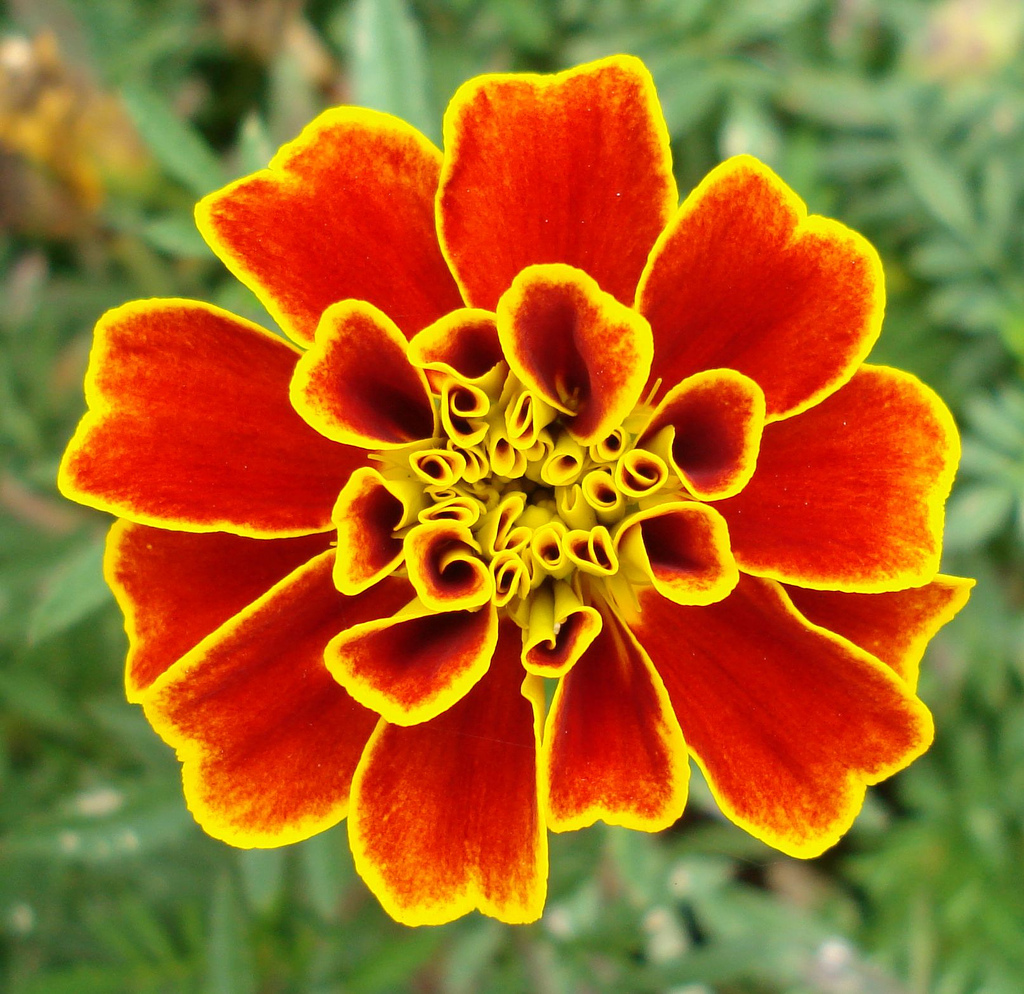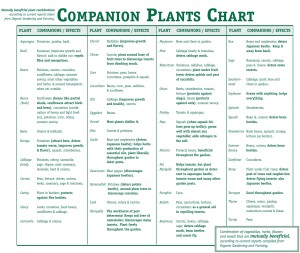Over the last few weeks we’ve learned about the principles behind bioregional permaculture and the benefits of composting. So for those of you who are interested in putting these two ideas into action, you may be thinking to yourselves “What should I plant?”
Rather than putting in a random mix of plant species in your green space, how about thinking about what plants work well together, and what plants do not? This is the philosophy behind companion planting. Companion planting has a vast array of benefits. Some companion plants act as a natural deterrent of pests for their neighboring plants, so the need for chemical pesticides disappears. Some attract beneficial insects to keep pest infestations in check. Some plants can improve the yield of their companions, and others are known to improve the flavor of their companions.
Companion planting also works in a physical or spatial sense where tall, sun loving plants share space with low growing shade tolerant plants to maximize the space available. It also works across yields in the sense that by planting legumes (such as chickpeas, peas or lentils) after a season of crops or plants, the legumes naturally enrich the soil with nitrogen so that no fertilizers need to be used for the following season’s crop.
So let’s say you’re thinking of starting an herb garden. An excellent addition to any home cook’s armory, because nothing beats the taste of fresh herbs picked straight from the planter box onto the plate. For those who love italian food, basil is a versatile and delicious must. Planted next to tomatoes, these two plants not only improve each other’s taste and growth, but also repel flies and mosquitoes. Borage, or starflower, when planted next to tomatoes, helps attract bees for pollenating your tomato plants, and wards against tomato worm. Parsley is another herb that happily cohabitates with tomato and basil, so already you have a little herb patch ready for a summer supply of caprese salads.
Continuing on this theme of growing an herb garden, other plants that work will together are thyme, chives, onion and lettuce. The herbs improve each other’s growth and flavor, while the onion protects the lettuce from slugs. Rosemary, carrots, beans sage and cabbage also share a happy relationship. Rosemary deters cabbage moths, bean beetles and carrot flies, while sage also has insect repellent properties. If carrots are planted at the base of fruit trees, they also help prevent insects from climbing up the tree trunk.
If you prefer floral imagery to herbaceous imagery, marigolds are nature’s wonder plants when it comes to repelling insects. Petunias also grow well with all manner of plants, and protect beans in particular from insects.
These are just a few ideas to get you thinking about how to leverage the power of nature to get the most out of your green space. Of course what you can do will depend on the amount of space you have to work with, but you can get a whole lot of herby goodness from a small amount of space.
Have a look at the chart below for some more companion planting ideas. Happy planting!



